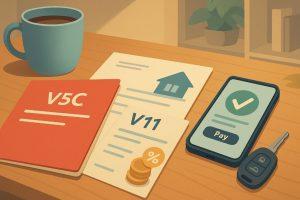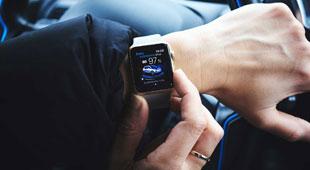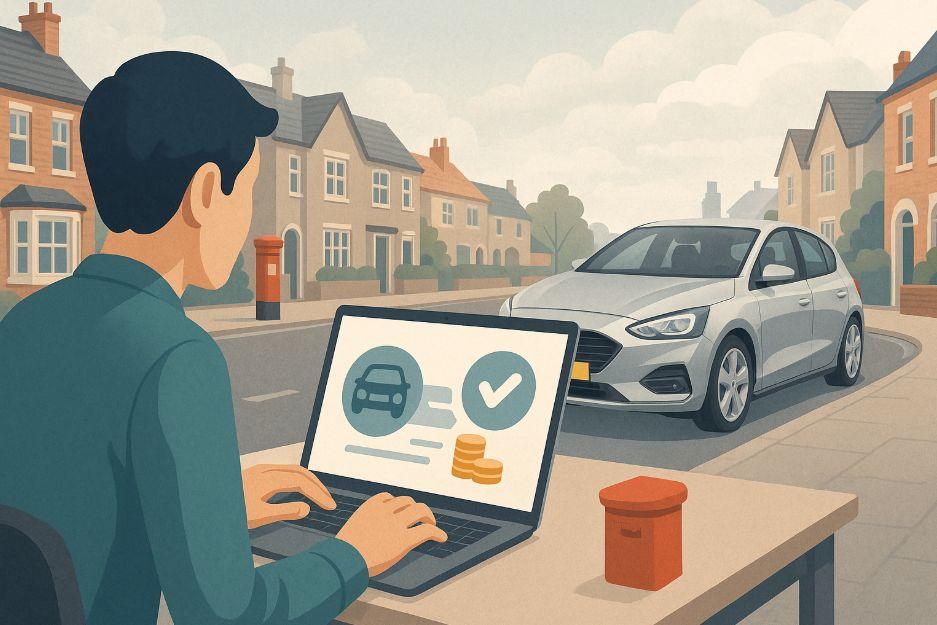Taxing your vehicle is a legal obligation for motorists in the UK, enforced by the Driver and Vehicle Licensing Agency (DVLA). With streamlined digital services, checking and paying your DVLA vehicle tax online is now quicker and more efficient than ever. This guide explores how to stay compliant, avoid penalties, and keep your vehicle road-legal using DVLA’s official tools.
What Is DVLA Vehicle Tax and Why Is It Mandatory in the UK?

DVLA vehicle tax, commonly known as car tax or road tax, is a mandatory payment required for most vehicles operated or parked on public roads in the United Kingdom. Managed by the Driver and Vehicle Licensing Agency (DVLA), this tax helps fund road maintenance, traffic infrastructure, and public transport services.
Paying vehicle tax is a legal requirement, and failing to do so can lead to severe penalties. The DVLA uses advanced technology like Automatic Number Plate Recognition (ANPR) to identify untaxed vehicles, making enforcement swift and efficient.
While some vehicles such as electric cars or historic vehicles may qualify for exemptions, the majority of vehicle owners in the UK must pay the correct amount of tax to remain compliant with the law.
How Can You Check If Your Vehicle Is Already Taxed?
Checking your vehicle tax status is both simple and free. The DVLA offers a dedicated online tool that allows any vehicle owner to confirm whether their car is currently taxed. By visiting the DVLA Vehicle Enquiry Service and entering the vehicle registration number, you can immediately access the tax status and MOT expiry date of your vehicle.
This service is particularly useful for those who are unsure when their tax is due, or for individuals considering the purchase of a second-hand car. It ensures transparency and helps avoid penalties that result from accidentally operating an untaxed vehicle. The information provided is accurate and updated in real time, allowing vehicle owners to make timely decisions.
Where Do You Go to Pay Your Vehicle Tax Online?
The safest and most direct way to pay your vehicle tax is through the official DVLA website at www.gov.uk/vehicle-tax. This site is managed by the UK government and offers a secure platform for payment. Be cautious of unofficial third-party websites that may charge additional service fees for tasks that the DVLA provides for free.
The online process is user-friendly, allowing you to complete your vehicle tax renewal from a smartphone, tablet or desktop computer. Once you’ve entered the required information, such as your reference number and payment details, your vehicle will be taxed instantly, and you’ll receive digital confirmation. It’s efficient, secure and available 24/7.
What Documents Do You Need to Pay Your DVLA Car Tax?

To pay your car tax online, you’ll need one of the following: the vehicle’s V5C logbook, a V11 tax reminder letter, or the 11-digit reference number provided by the DVLA. These references link your vehicle to its tax status and allow you to proceed with payment securely.
If you’re not the registered keeper, you may need a V5C/2 green slip from the previous owner to complete the process. In all cases, a valid MOT certificate is required unless your vehicle is MOT-exempt. Without a valid MOT, the system won’t allow the tax to be renewed, preventing unsafe vehicles from being used on public roads.
Can You Pay Vehicle Tax Without a V5C or Logbook?
While the V5C logbook is the most straightforward method for taxing a vehicle, it is possible to do so without it. If you’ve lost your logbook, you must apply for a replacement using a V62 form. This process incurs a fee and can take several weeks to process.
However, if you’ve received a V11 tax reminder from the DVLA, you can still pay your vehicle tax using the 16-digit reference number printed on it. This serves as a temporary alternative while you wait for a replacement V5C, ensuring you remain compliant without risking late payment penalties.
How Does Direct Debit for Car Tax Work?
Direct Debit is an increasingly popular method for managing vehicle tax payments, offering a convenient, automated approach that reduces the risk of forgetting to renew. When you choose to pay via Direct Debit, you can spread the cost over monthly, six-monthly, or annual instalments, depending on what suits your budget best.
Setting up a Direct Debit is straightforward. During the online payment process, you’ll be prompted to enter your bank details. Once confirmed, payments are taken automatically on the agreed dates. The DVLA sends reminders before each withdrawal, giving you full visibility and control. Should your circumstances change, you can cancel or amend the arrangement with minimal hassle.
What Happens If You Forget to Tax Your Vehicle?

Failing to tax your vehicle can result in immediate consequences. The DVLA issues automatic penalties starting from £80, which can be reduced to £40 if paid promptly. If the issue remains unresolved, your vehicle may be clamped, impounded, or even crushed.
In cases of repeated non-compliance, the DVLA can escalate matters to court, leading to higher fines and additional legal costs. These outcomes are entirely avoidable if you take advantage of digital reminders, Direct Debit, or calendar alerts to stay on top of your renewal dates. Proactivity ensures you avoid the inconvenience and financial burden of enforcement action.
Is It Possible to Tax a Car That’s Been Declared SORN?
A vehicle that has been declared under SORN (Statutory Off Road Notification) is considered legally off the road. If you intend to drive it again or park it on public roads, the SORN must be cancelled, and the vehicle must be taxed.
To re-tax a SORN vehicle, visit the DVLA online tax portal, enter the relevant reference from your V5C or V11, and proceed with payment. Once complete, the SORN status will be automatically lifted, allowing you to resume legal use of the vehicle. It’s important to remember that a valid MOT must also be in place if the vehicle is subject to MOT regulations.
How Are Vehicle Tax Rates Calculated in the UK?
Vehicle tax rates in the UK depend on several variables. These include the date your vehicle was first registered, its fuel type, engine size, and emissions level. For vehicles registered after April 2017, a standard annual rate applies after the first year, which is typically based on CO₂ emissions.
Drivers can use the DVLA’s online tax rate calculator to estimate their payments in advance. This tool considers the specific details of your vehicle and ensures that you are aware of how much you’ll need to pay. Vehicles with higher emissions generally attract a higher tax rate, aligning with the UK government’s efforts to reduce environmental impact.
Can You Check MOT and Tax Status at the Same Time?

Yes, the DVLA’s vehicle enquiry service allows you to check both the MOT and tax status of a vehicle using a single tool. This is particularly useful for motorists managing multiple vehicles, as well as those purchasing used cars and wanting to ensure the vehicle is roadworthy and legally compliant.
The system is accessible via the DVLA website, requires only the vehicle’s registration number, and provides instant results. By reviewing both statuses together, vehicle owners can coordinate renewals more efficiently and avoid legal lapses.
DVLA Vehicle Tax Payment – Quick Reference Table
| Task | Required Info | Where to Go | Cost/Fees |
| Check Tax Status | Registration number | vehicleenquiry.service.gov.uk | Free |
| Pay Vehicle Tax | V5C/V11, payment info | gov.uk/vehicle-tax | Varies by vehicle |
| Set Up Direct Debit | Bank details, V5C | During online payment process | No extra fee |
| Replace Lost Logbook | Vehicle details | gov.uk/vehicle-log-book | £25 |
| Declare or Cancel SORN | V5C/V11 | gov.uk/make-a-sorn | Free |
Conclusion
Keeping your vehicle tax up to date is more than just a bureaucratic necessity. it’s a legal obligation that supports road maintenance, public services, and environmental policy.
Thanks to the DVLA’s online services, checking and paying your car tax is now fast, easy, and secure. Whether you prefer to handle your responsibilities manually or automate them through Direct Debit, the tools are readily available to ensure you remain compliant.
By understanding your tax status, renewing promptly, and avoiding costly penalties, you contribute to a safer and more efficient road system for everyone. If your tax is due soon, don’t delay take five minutes today and handle it online.
FAQs
What is the V11 reminder and when is it sent?
The DVLA sends a V11 reminder roughly one month before your vehicle tax is due. It includes a reference number you can use to renew online.
Can I pay DVLA car tax without an MOT?
No. Your vehicle must have a valid MOT to be taxed online unless it qualifies for an exemption, such as being a historic vehicle.
Is it legal to drive to an MOT test without tax?
Yes, but only if the MOT is pre-booked and the vehicle is insured. You’re allowed to drive directly to the test centre under these conditions.
How long does it take for DVLA to update tax status online?
The update is usually immediate once the tax payment is processed online. You can confirm the status using the vehicle enquiry tool.
Can I pay someone else’s vehicle tax?
Yes, as long as you have the correct V5C or V11 reference number, you can pay on someone else’s behalf through the DVLA website.
Will I get a physical disc after taxing my car?
No. The DVLA phased out tax discs in 2014. All vehicle tax records are now held electronically and monitored via registration number.
What happens if I pay vehicle tax twice by mistake?
If a duplicate payment is made, the DVLA usually detects the error and issues a refund automatically, typically within a few working days.









Leave feedback about this